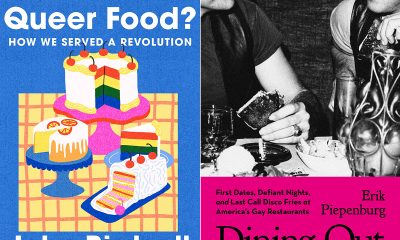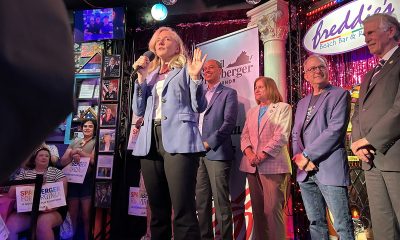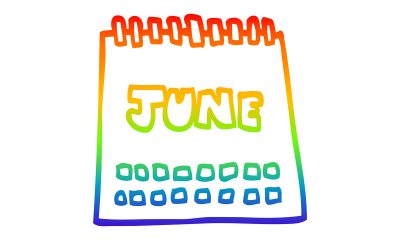Arts & Entertainment
Best of Gay D.C. 2016: NIGHTLIFE
Blade readers voted for their nightlife favorites

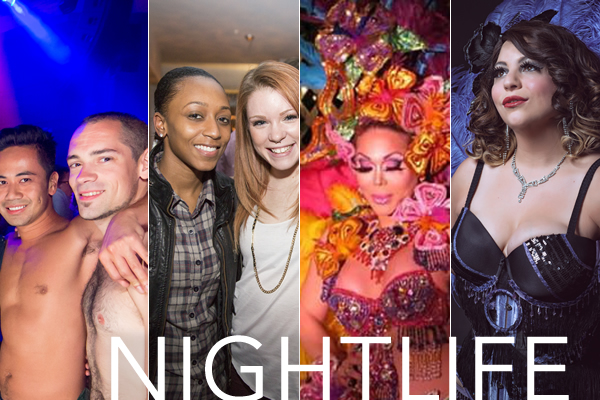 Best Dance Party
Best Dance Party
Mixtape
Runner-up: BARE by LURe
DJs Shea Van Horn and Matt Bailer host Mixtape, an alternative dance party, on the second Saturday of each month. Locations vary. The fifth annual Mixtape Halloween party is on Monday, Oct. 31 at the Howard Theatre. It’s at the 9:30 Club on Saturday, Nov. 12.
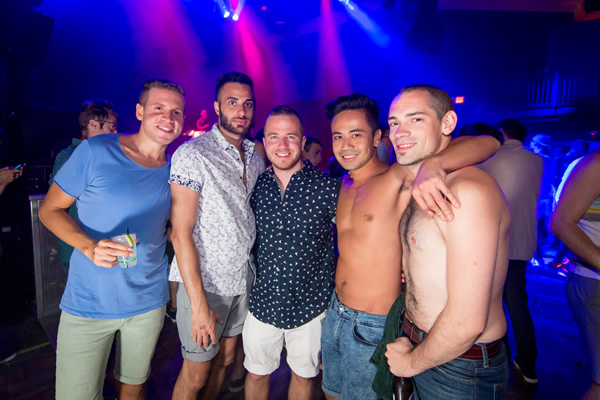
Mixtape (Photo by Dave Claypool)
Best Bartender
Dito Sevilla, Dito’s Bar at Floriana
1602 17th St., N.W.
Runner-up: Dusty Martinez, Trade

Dito Sevilla (Washington Blade photo by Michael Key)
Best Burlesque Dancer
Bella La Blanc
Runner-up: GiGi Holliday
Bella La Blanc is a housewife and mother of three, but unlike most wives and mothers, she’s a showgirl who has found a way to play multiple roles in her life and not just on stage.
La Blanc, originally from Miami, says she was a theater kid who first fell in love with burlesque after watching “Gypsy.” She then watched “Funny Girl” and once she came of legal age decided she wanted to emulate Barbra Streisand’s Fanny Brice. Her journey led her to frequent fetish clubs, at the time the only place to find burlesque shows.
Now La Blanc regularly performs at the Bier Baron Tavern and has her own burlesque production company Glit-O-Rama Productions. She’s also become known for her cos-play of Regina Mills from “Once Upon a Time.”
La Blanc says her showgirl life is an open book for her kids who often see an evening gown and a vat of crystals strung out on the dining room table after dinner in her Northern Virginia home. Events like this make it all the more fitting that her tagline is “The Stepford Wife gone wild!”
For La Blanc, burlesque is all about pride in being who you are.
“As an exhibitionist I love being on stage and I love sparkly things,” La Blanc says. “But I find that self-empowerment, self-confidence is what burlesque is all about. I go on stage and I’m like, ‘Yeah, I’m a 30-something-year old woman. This body has popped out babies and I’m still going to wear next to nothing and shake my bacon.” (Mariah Cooper)
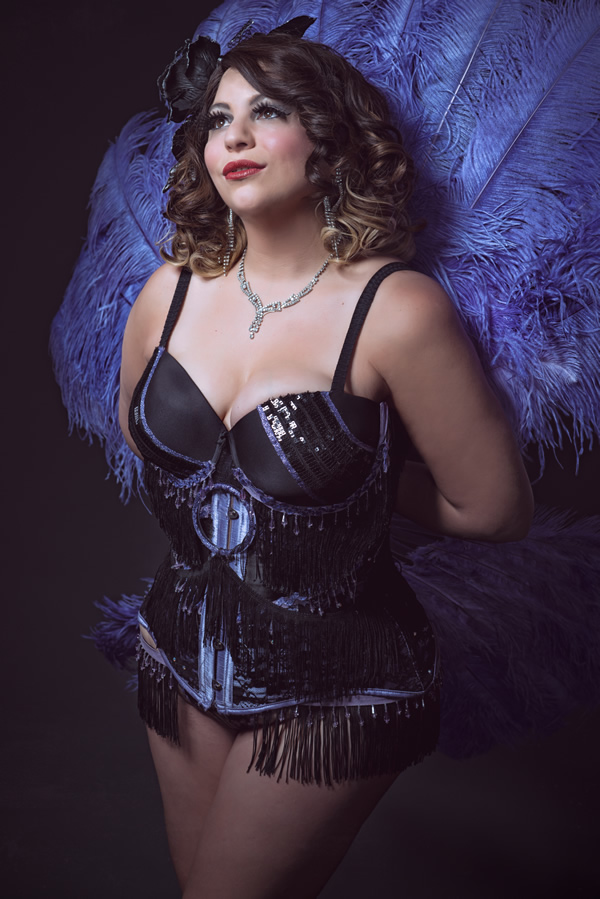
Bella La Blanc (Photo courtesy of La Blanc)
Best Cocktail
Lemon Squeeze
Duplex Diner
2004 18th St., N.W.
202-265-7828
(Second consecutive win in this category)
Runner-up: Watermelon Basil Slush, Logan Tavern
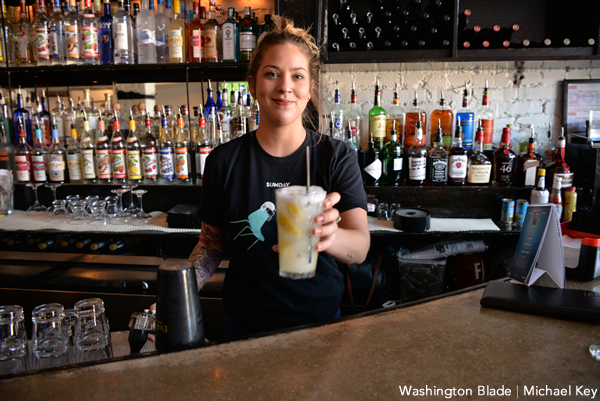
A bartender makes a Lemon Squeeze at Duplex Diner. (Washington Blade photo by Michael Key)
Best DJ
Matt Bailer
Peach Pit, Mixtape
(Second consecutive win in this category)
Runner-up: DJ Tezrah
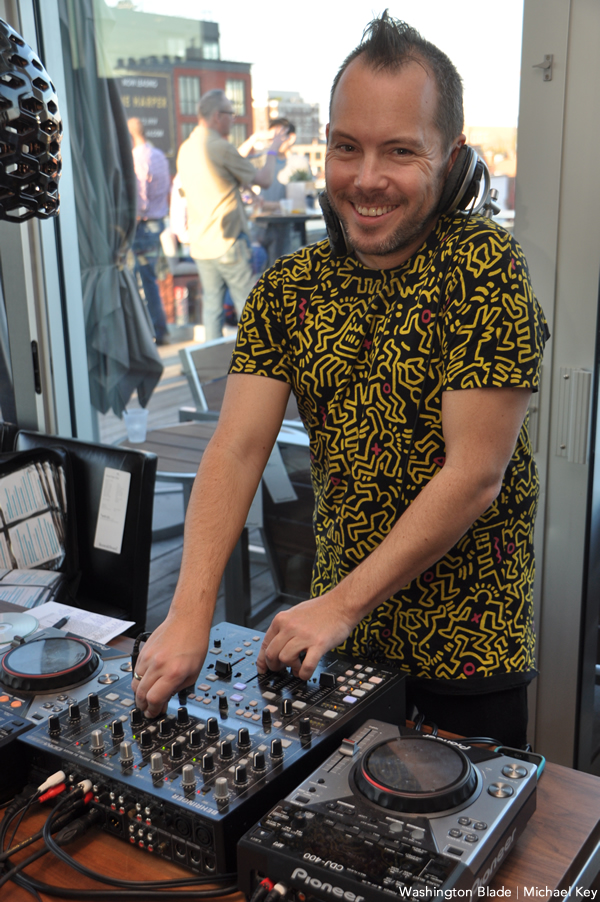
DJ Matt Bailer (Washington Blade photo by Michael Key)
Best Drag King
Chris Jay
Runner-up: Sebastian Katz
Chris Jay — who identifies as gender non-conforming and goes by Chris Jennings in non-drag endeavors — started drag three-and-a-half years ago, led to the craft by photography.
Interested in finding some different subjects, he happened upon the D.C. Kings four years ago and started shooting as many of their performances as he could. About six months later, he started with the Kings and continues to this day.
“I’m a lover of R&B, so you’ll find me performing that mostly,” Jay says. “My drag persona is me at a thousand, so I’m kind of full of myself and way more outgoing.”
Now with Pretty Boi Drag (the Kings folded two years ago), Jay performs twice a month — the first Sunday of each at Acre 121 and the third Sunday of each month at the Bier Baron. Jay is 36, happily partnered and lives in Baltimore. (Joey DiGuglielmo)
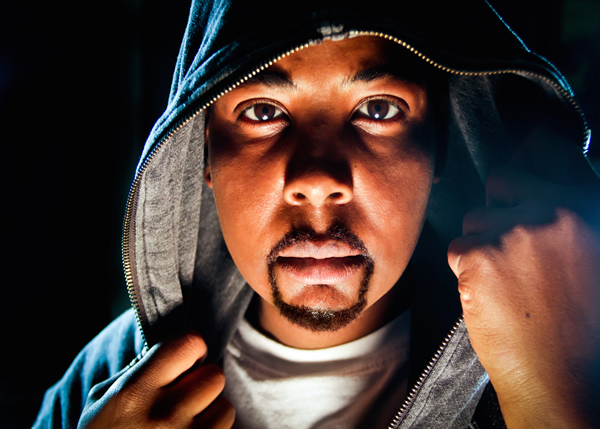
Chris Jay (Photo courtesy of Chris Jay)
Best Drag Queen
Tatianna
Runner-up: Ba’Naka
While Tatianna has been a drag nightlife staple in D.C., for the rest of the nation she had dropped off the radar in between her appearance on the second season of “RuPaul’s Drag Race” and her reemergence in “RuPaul’s Drag Race All Stars 2.”
In her original season, Tatianna, who hails from Falls Church, Va., became a stand-out competitor when she won Snatch Game with her eerily on point imitation of Britney Spears circa 2005. Her taglines, “Thank you” and “Choices” also made her a fan favorite.
In “All Stars 2” Tatianna was booted from the show by fellow queen Alaska not once, but twice. However before leaving she yet again left an impression on the judges with her spoken word performance of “Same Parts,” an ode to men at parties who hit on her and don’t realize she also has the “same parts.”
The local queen also dressed up as T-Boz for her last runway challenge impressing both the judges and fans.
Tatianna can frequently be found performing at Town and has said her favorite celebrities to impersonate are Britney Spears, Ariana Grande and Miley Cyrus. Tatianna has mentioned on “RuPaul’s Drag Race” that she first began doing drag in middle school at age 14.
Since leaving the show, Tatianna is ready to continue working hard on her career.
“You can expect to see me everywhere because I’m traveling the world, dropping new music and saying ‘Yes!’ to any and all projects,” Tatianna told the Huffington Post following her exit from the show. (Mariah Cooper)
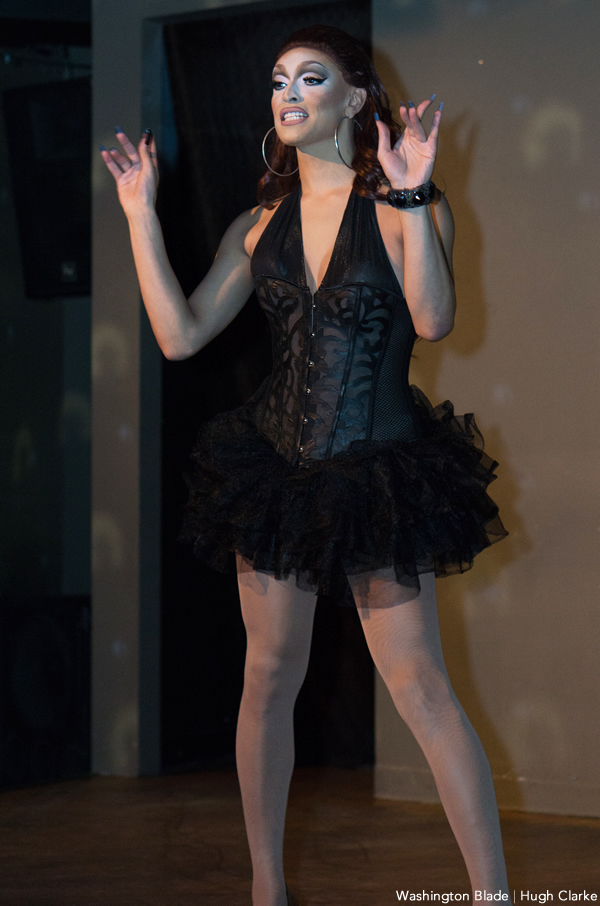
Tatianna (Washington Blade photo by Hugh Clarke)
Best Drag Show
Ladies of Town
Fridays and Saturdays at 10:30 p.m.
Town Danceboutique
2009 8th St., N.W.
Runner-up: Pretty Boi Drag
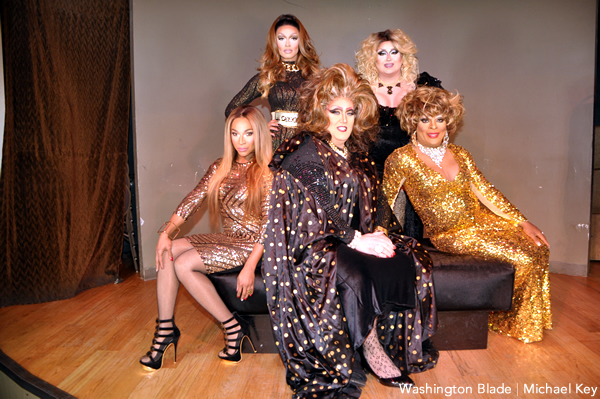
Ladies of Town (Washington Blade photo by Michael Key)
Best Gay-Friendly Straight Bar
Dacha Beer Garden
1600 7th St., N.W.
202-524-8790
(Second consecutive win in this category)
Runner-up: Black Cat
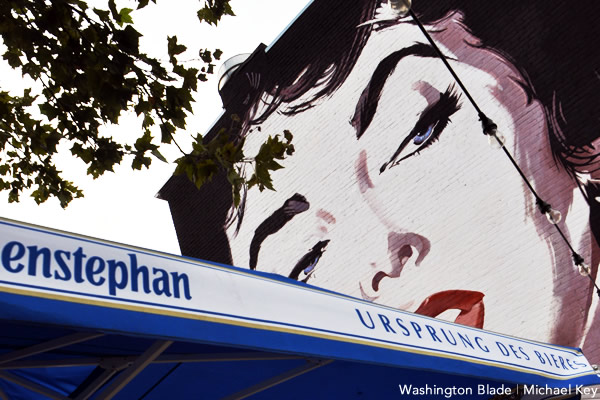
Dacha Beer Garden (Washington Blade photo by Michael Key)
Best Go-Go Dancer/Stripper
Dylan Knight
Runner-up: Christian Lezzil

Dylan Knight (Photo by David Claypool; courtesy Knight)
Tatianna isn’t the only star to launch from Town Danceboutique. Dylan Knight started gyrating lasciviously about 2010 after seeing other go-go dancers there.
He’s a weekly regular at Town and performs there and elsewhere, never taking himself too seriously.
“I just try to be entertaining and cute,” the 25-year-old D.C. resident says.
He’s also honored to win — “It feels good, I didn’t think I would.”
Knight dances nude sometimes and has shot more than 100 gay porn scenes since 2012 (favorite co-star? Colby Jansen).
He got his famous shamrock tattoo at Ocean City at age 18 when he was there for his senior trip. “My boyfriend and I got matching tattoos,” he says. “I’m Irish and pretty lucky, so it fits.” (Joey DiGuglielmo)
Best Happy Hour
D.C. Bear Crüe Bear Happy Hour
Every Friday at 6 p.m.
Town Danceboutique
2009 8th St., N.W.
Runner-up: Number Nine
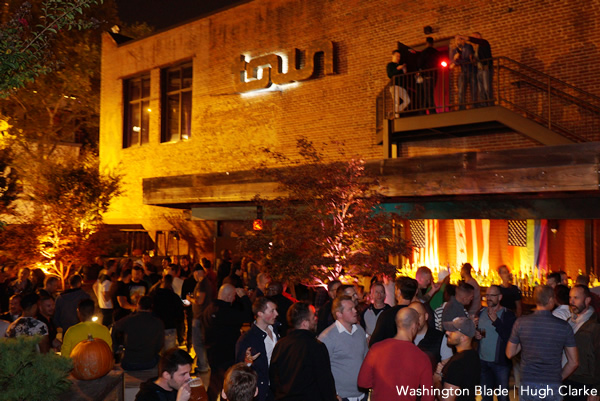
D.C. Bear Crüe Bear Happy Hour (Washington Blade photo by Hugh Clarke)
Hottest Bar Staff
Nellie’s
900 U St., N.W.
Runner-up: Town Patio
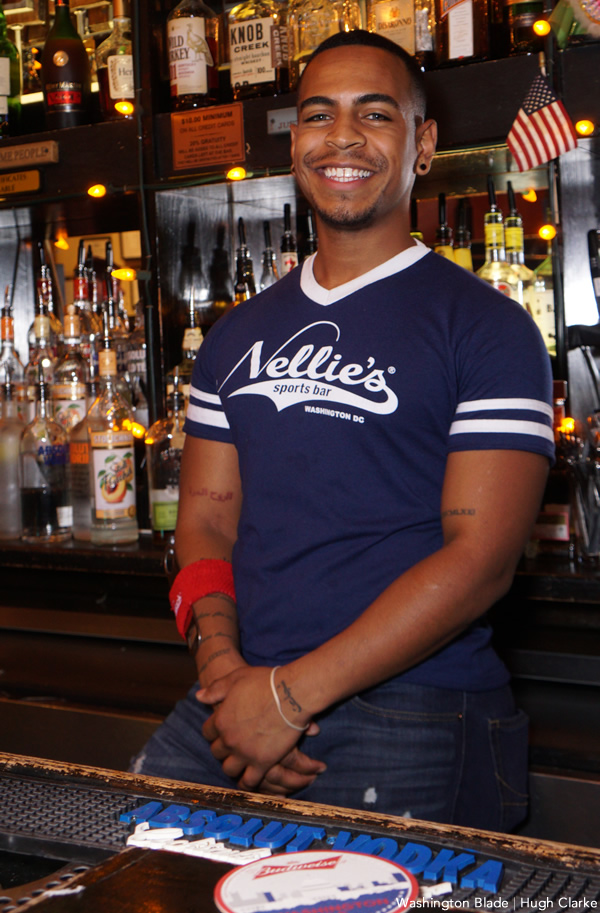
Nellie’s Sports Bar (Washington Blade photo by Hugh Clarke)
Best Live Music
9:30 Club
815 V St., N.W.
(A perennial favorite in this category)
Runner-up: Black Cat
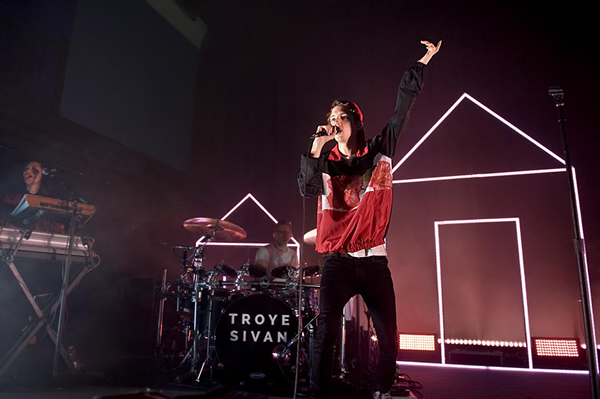
Troye Sivan performs at the 9:30 Club (Photo by Katherine Gaines)
Best Neighborhood Bar
JR.’s Bar & Grill
1519 17th St., N.W.
(A perennial favorite in this category)
Runner-up: Uproar
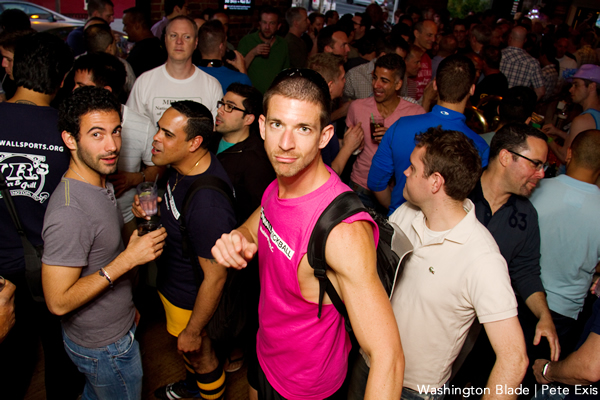
JR.’s (Washington Blade photo by Pete Exis)
Best Outside-the-District Bar
Freddie’s Beach Bar
555 S. 23rd St.
Arlington, Va.
(A winner of this award many times previously)
Runner-up: Grand Central (Baltimore)
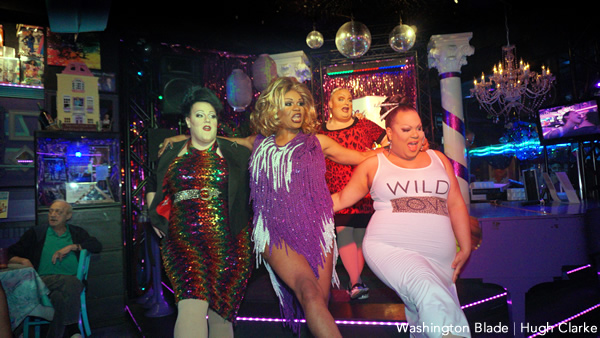
Freddie’s Beach Bar and Grill (Washington Blade photo by Hugh Clarke)
Best Outdoor Drinking
Town Patio
Town Danceboutique
2009 8th St., N.W.
(Second consecutive win in this category)
Runner-up: Dacha Beer Garden
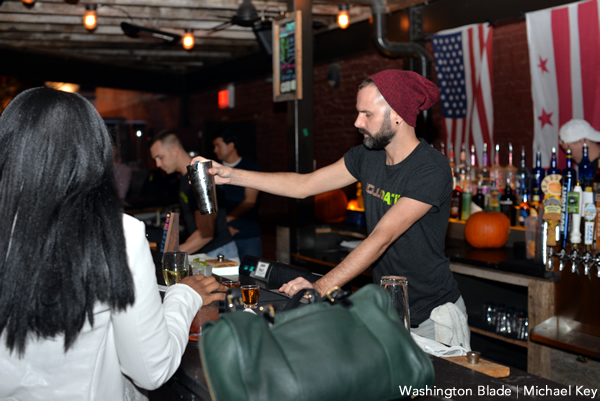
Town Patio (Washington Blade photo by Michael Key)
Best Place for Guys Night Out
Ziegfeld’s/Secrets
1824 Half St., S.W.
(Second consecutive win in this category)
Runner-up: D.C. Bear Crüe Bear Happy Hour
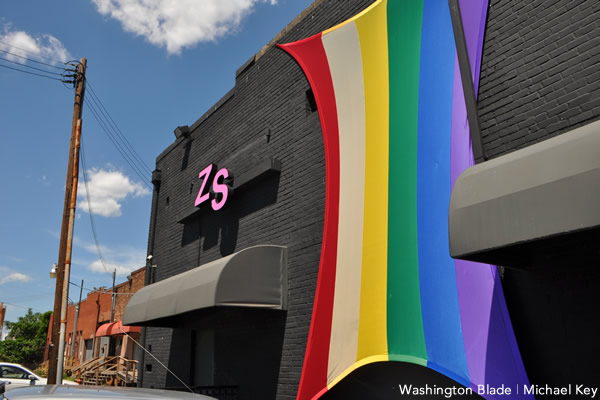
Ziegfeld’s-Secrets (Washington Blade file photo by Michael Key)
Best Place for Girls Night Out
BARE by LURe
Every third Saturday of the month at Cobalt
1639 R St., N.W.
(Second consecutive win in this category)
Runner-up: WhiskHER
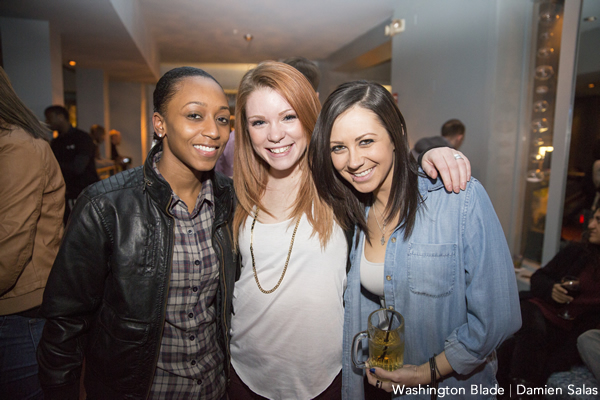
BARE by LURe (Washington Blade photo by Damien Salas)
Best Rehoboth Bar
Blue Moon
35 Baltimore Ave.
Rehoboth Beach, Del.
(Second consecutive win in this category)
Runner-up: Aqua
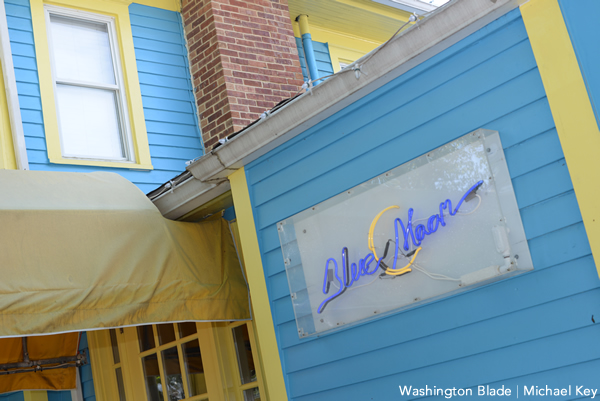
Blue Moon (Washington Blade photo by Michael Key)
Best Rehoboth Bartender
Matt Urban, Blue Moon
35 Baltimore Ave.
Rehoboth Beach, Del.
Runner-up: Jamie Romano, Purple Parrot
Matt Urban has been behind the bar at the venerable Blue Moon for 14 years. His friendly, reserved demeanor keeps the customers coming back year after year. He says the best part of the job is “meeting so many different people and catching up with friends.” Originally from Wilmington, he lives in Rehoboth with his wife.
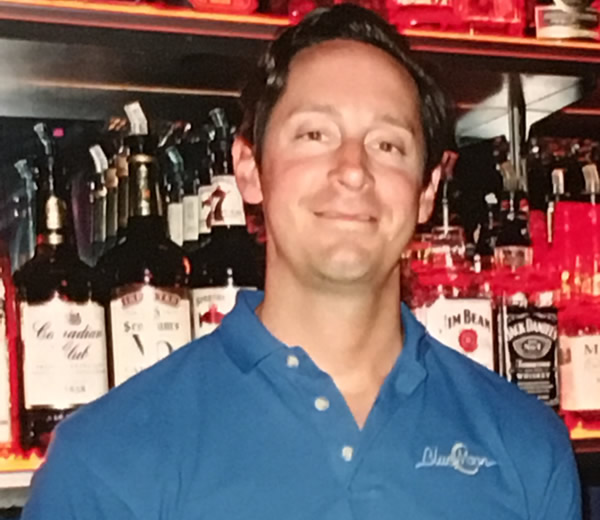
Matt Urban (Photo courtesy Urban)
Best Rooftop
Uproar Lounge & Restaurant
639 Florida Ave., N.W.
Runner-up: Nellie’s
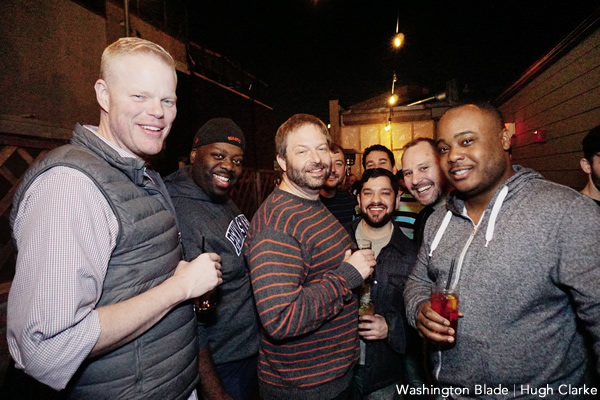
UpRoar rooftop (Washington Blade photo by Hugh Clarke)
Best Singer or Band
Frankie & Betty
(Second consecutive win in this category)
Runner-up: Wicked Jezabel
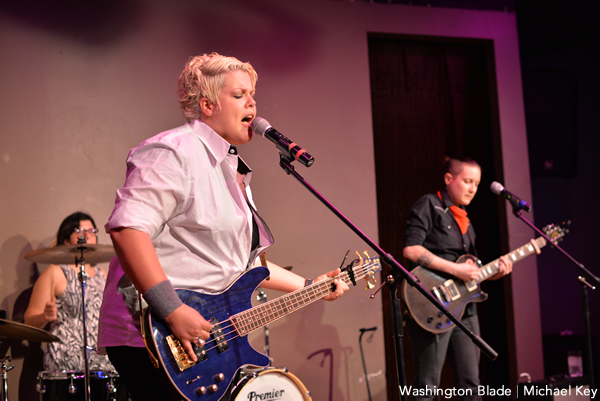
Frankie & Betty (Washington Blade photo by Michael Key)
Best Transgender Performer
Gigi Paris Couture
Runner-up: Lady Dane
Gigi Paris Couture started performing 20 years ago. She was just hanging out in drag one night at a bar and one of the performers was a no-show.
“They asked me to perform and I liked it,” Couture, a veteran of Ziegfeld’s, Town, Freddie’s, Cobalt, Perry’s and many others, says.
She performs weekly and works by day as a stylist at the Cosset Aveda in Crystal City, Va., near where she resides in Alexandria.
Couture, who’s single, says many trans performers work right alongside drag queens. She acknowledges there is “occasional tension, but nothing major.”
“There’s always something funny at every show,” Couture says. “That’s the nature of the business. A pastie can come off, duct tape might fall off or a piece of jewelry might fall on someone’s eggs during brunch. Little funny things that make people laugh.”
She’s happy to win this new category, a Washington Blade Best of Gay D.C. first.
“It’s an honor to be acknowledged for something I have enjoyed doing for so long.” (Joey DiGuglielmo)
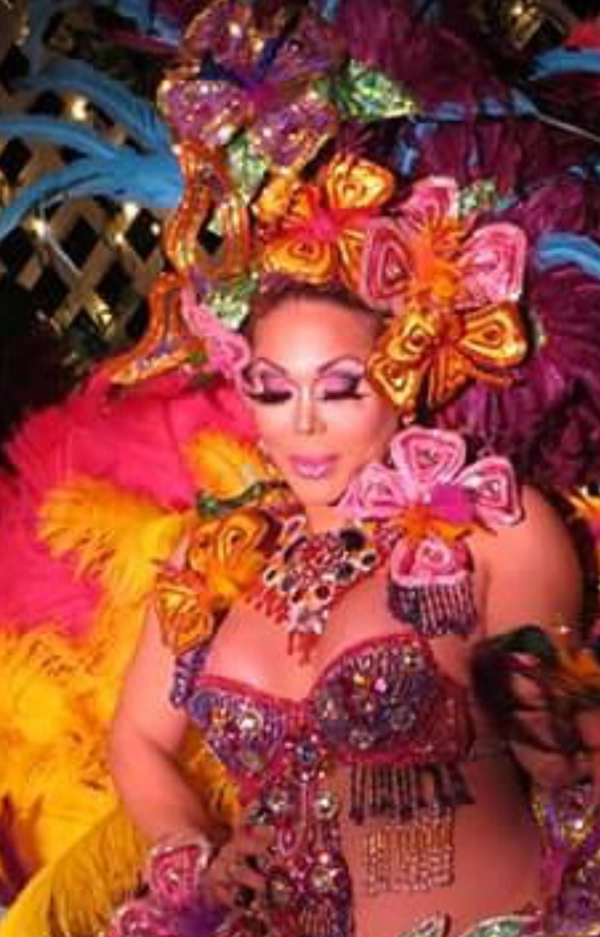
Gigi Paris Couture (Photo courtesy of Couture)
To see winners in other categories in the Washington Blade’s Best of Gay D.C. 2016 Awards, click here.

The fifth annual Fredericksburg Pride march and festival was held on Saturday, June 28. A march through the streets of downtown Fredericksburg, Va. was followed by a festival at Riverfront Park.
(Washington Blade photos by Michael Key)
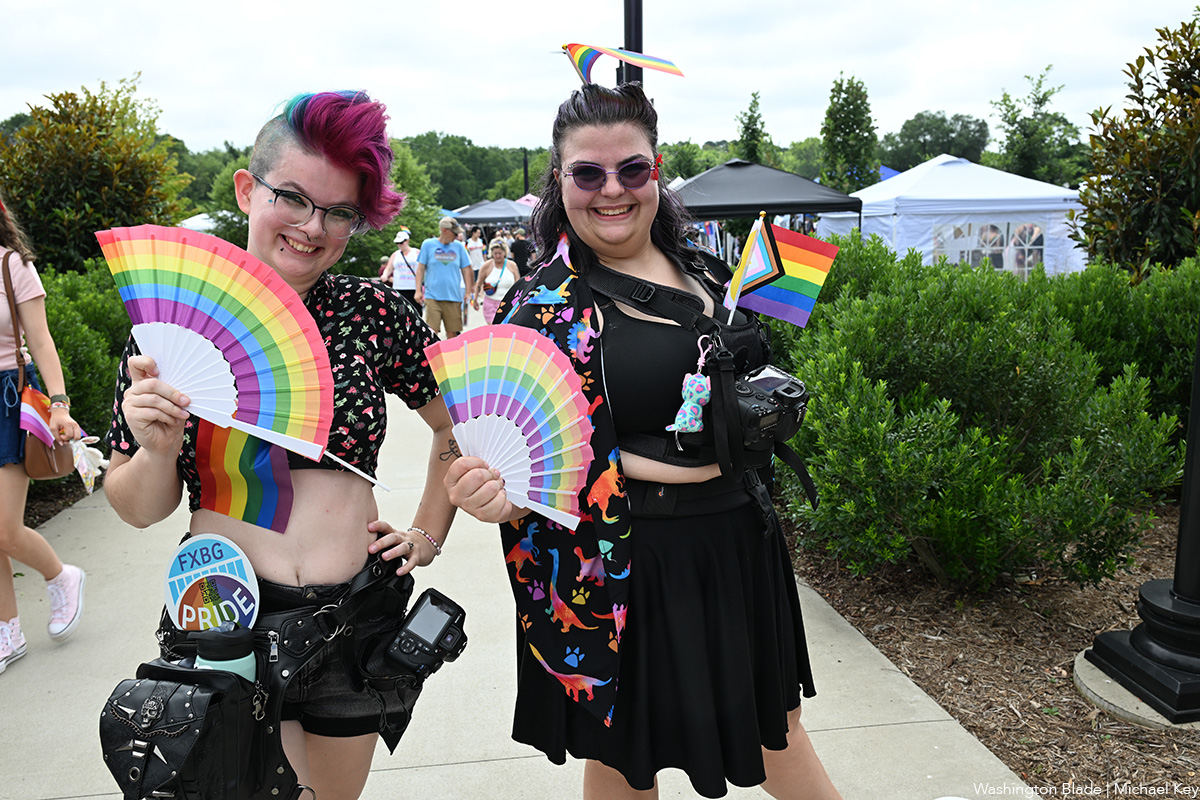
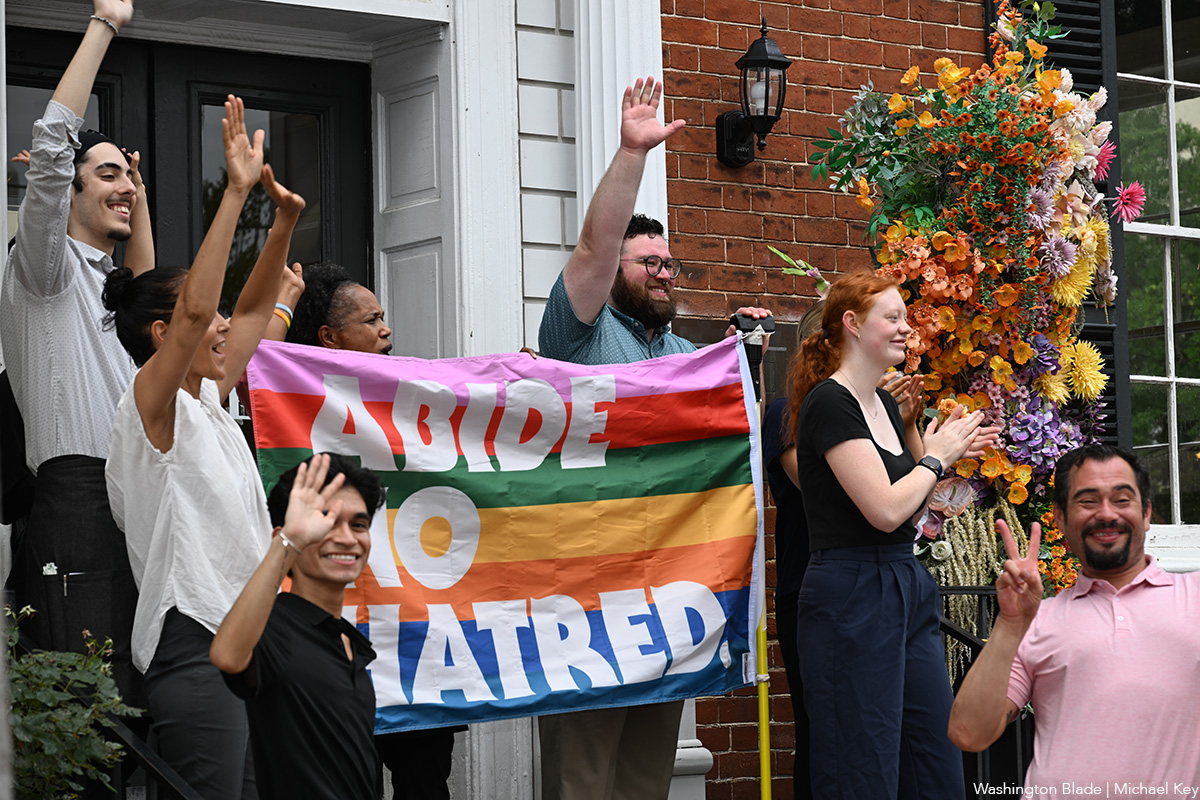
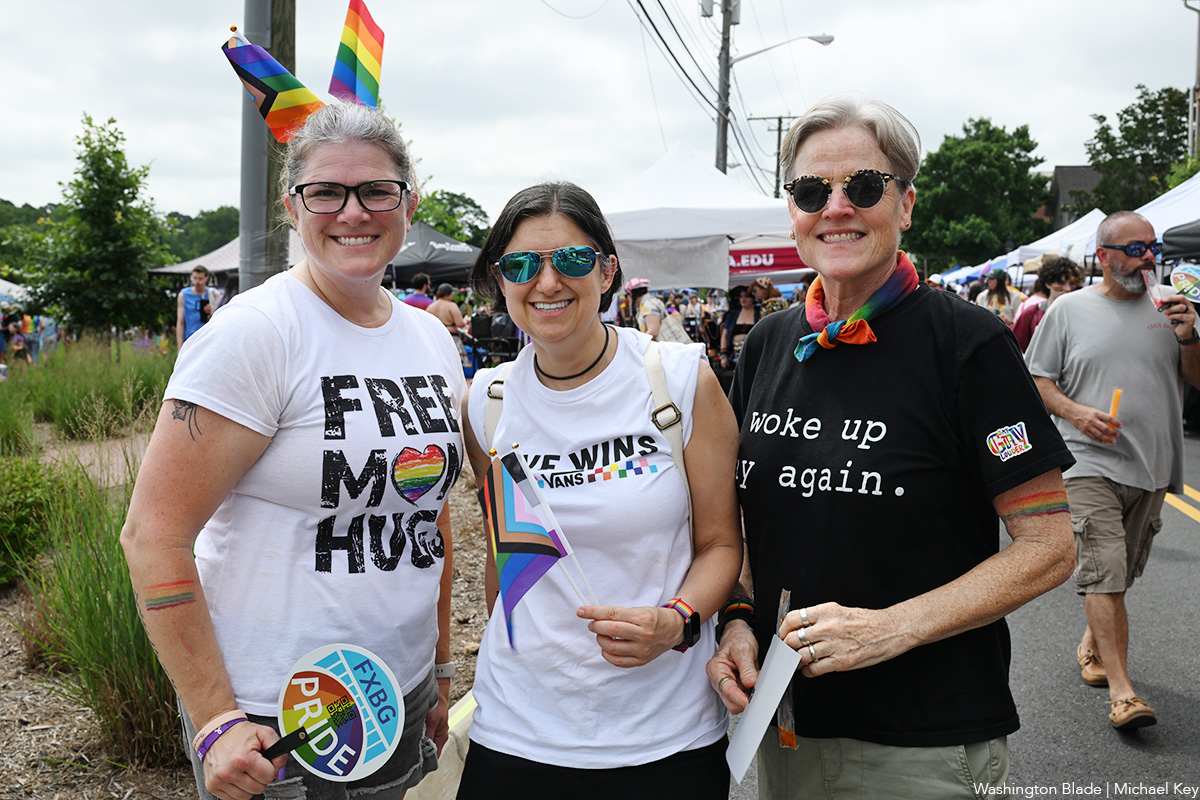
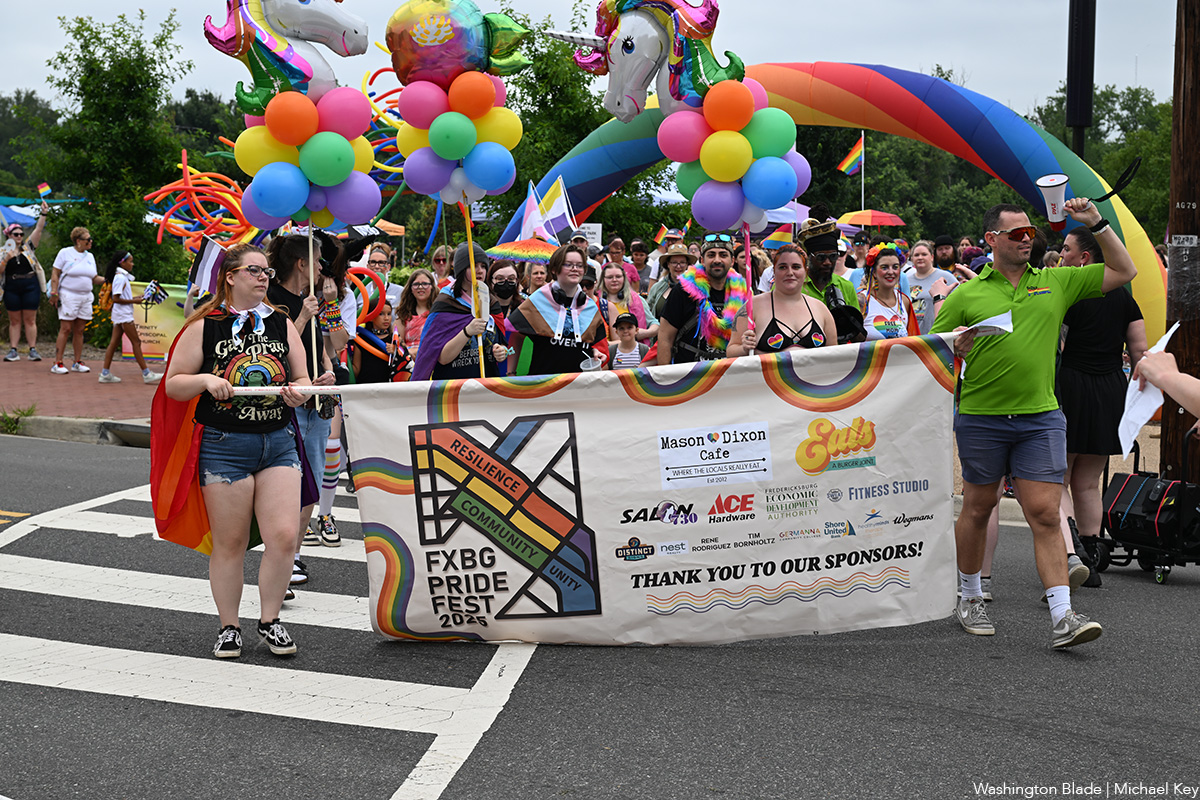
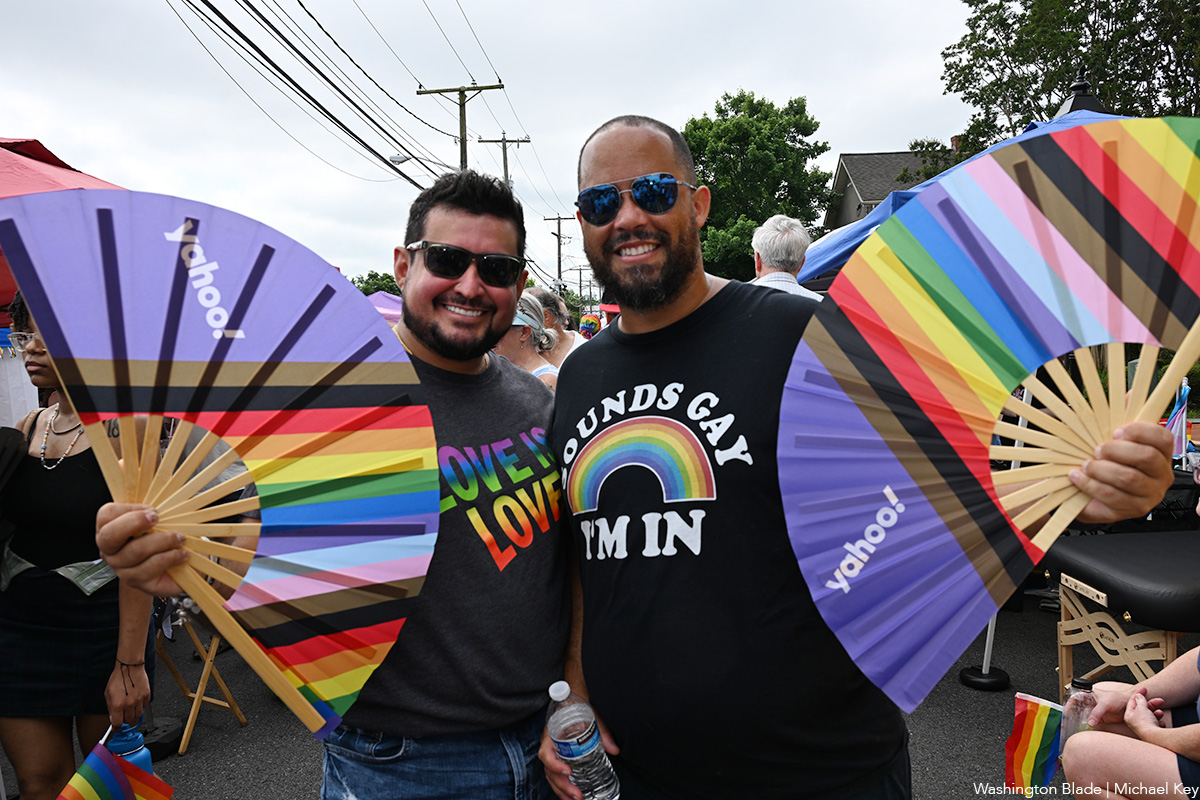
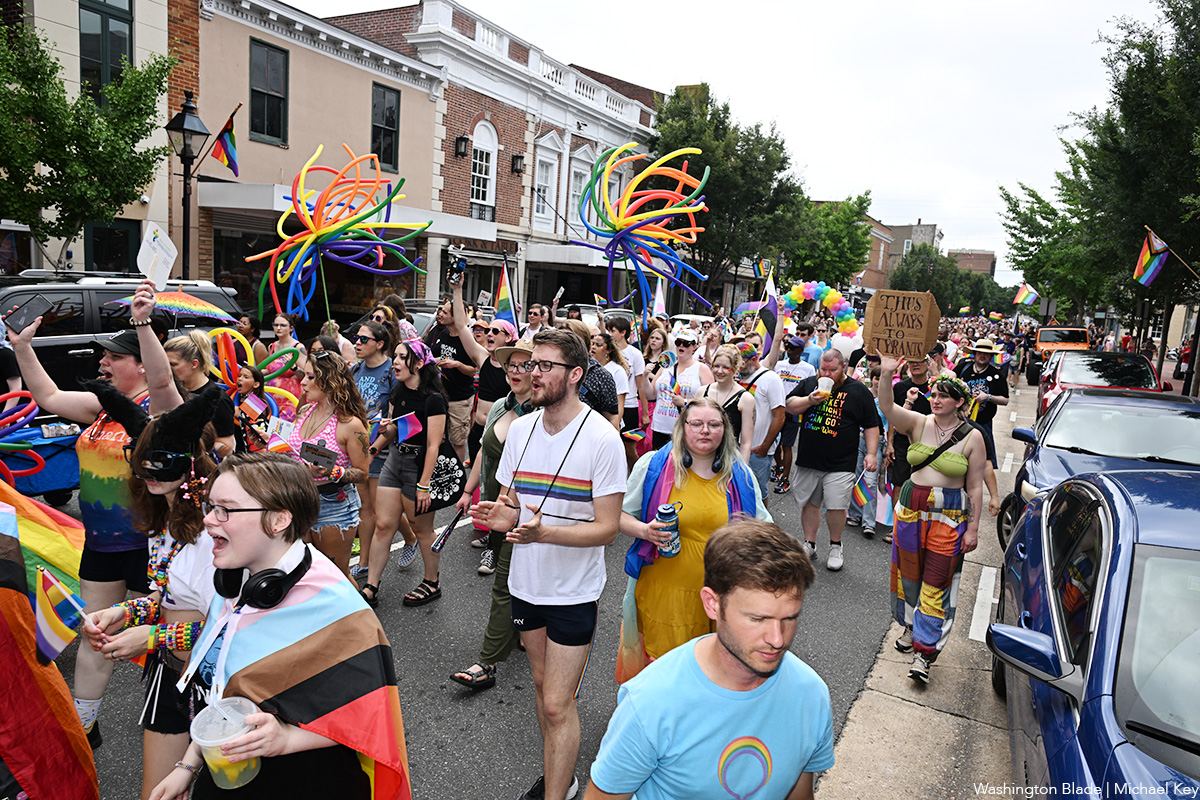
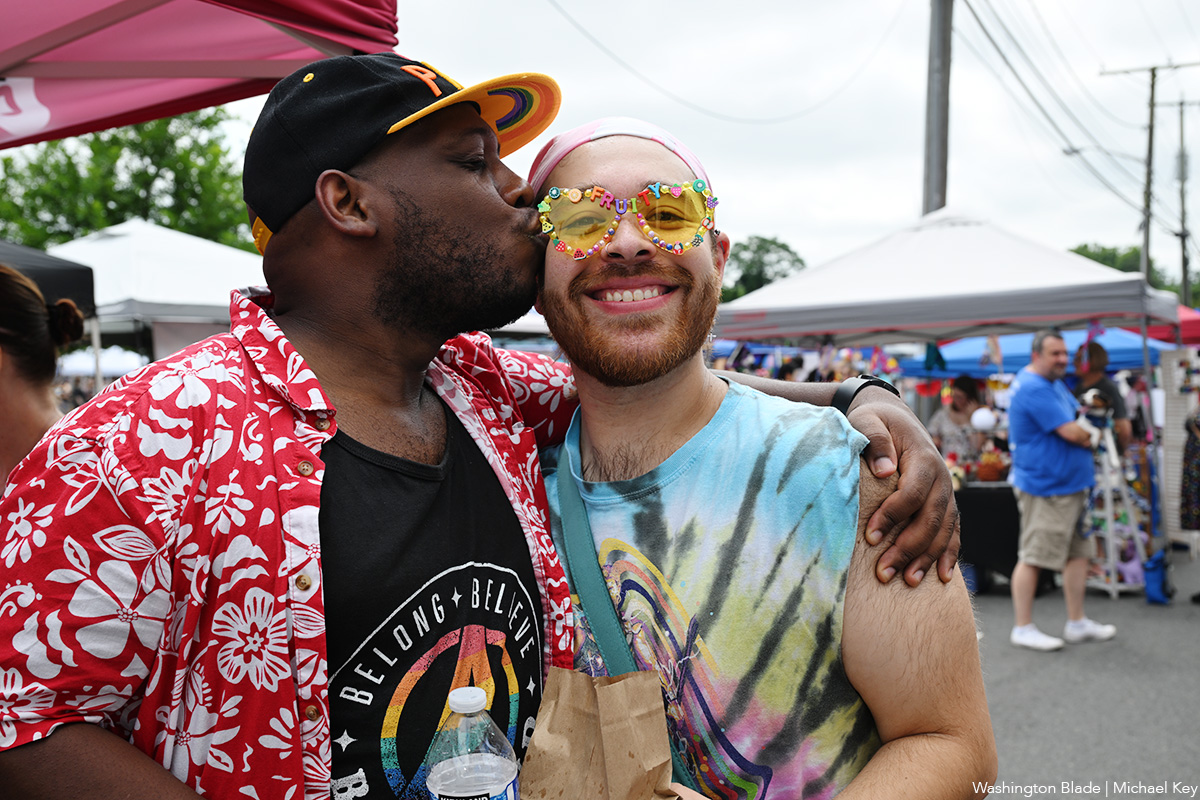
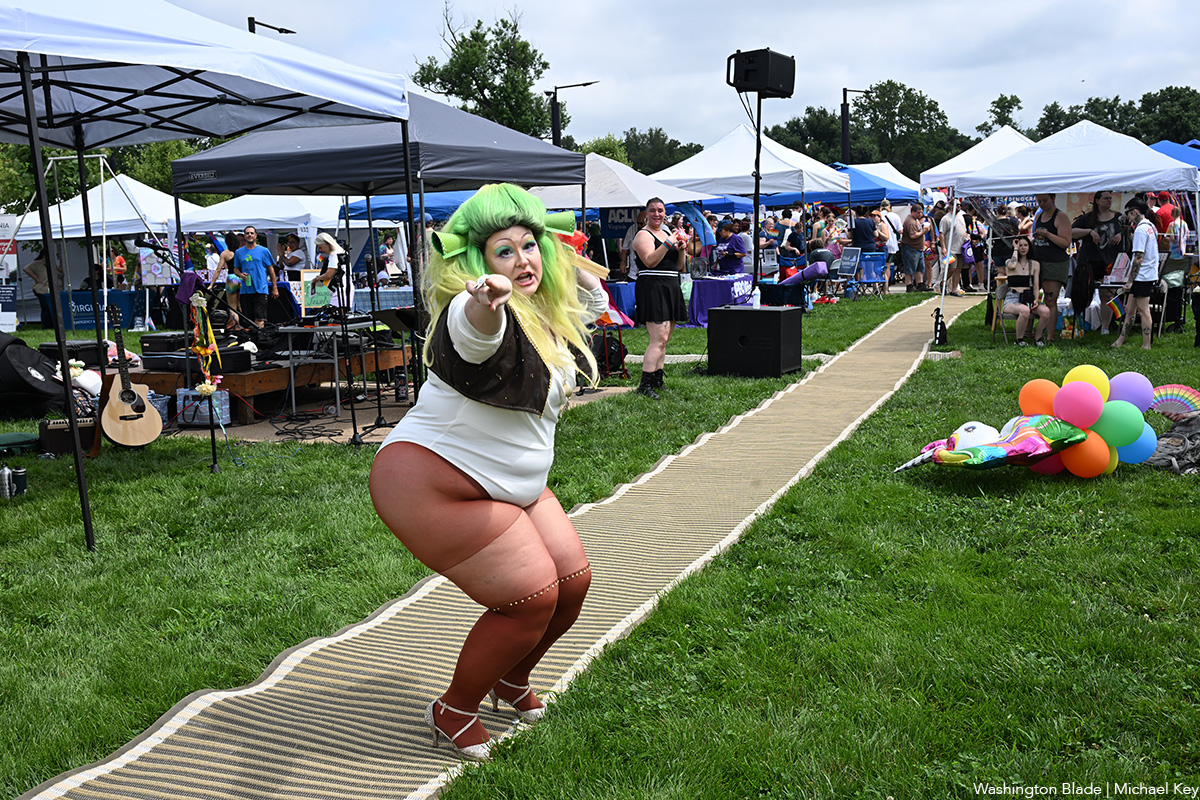
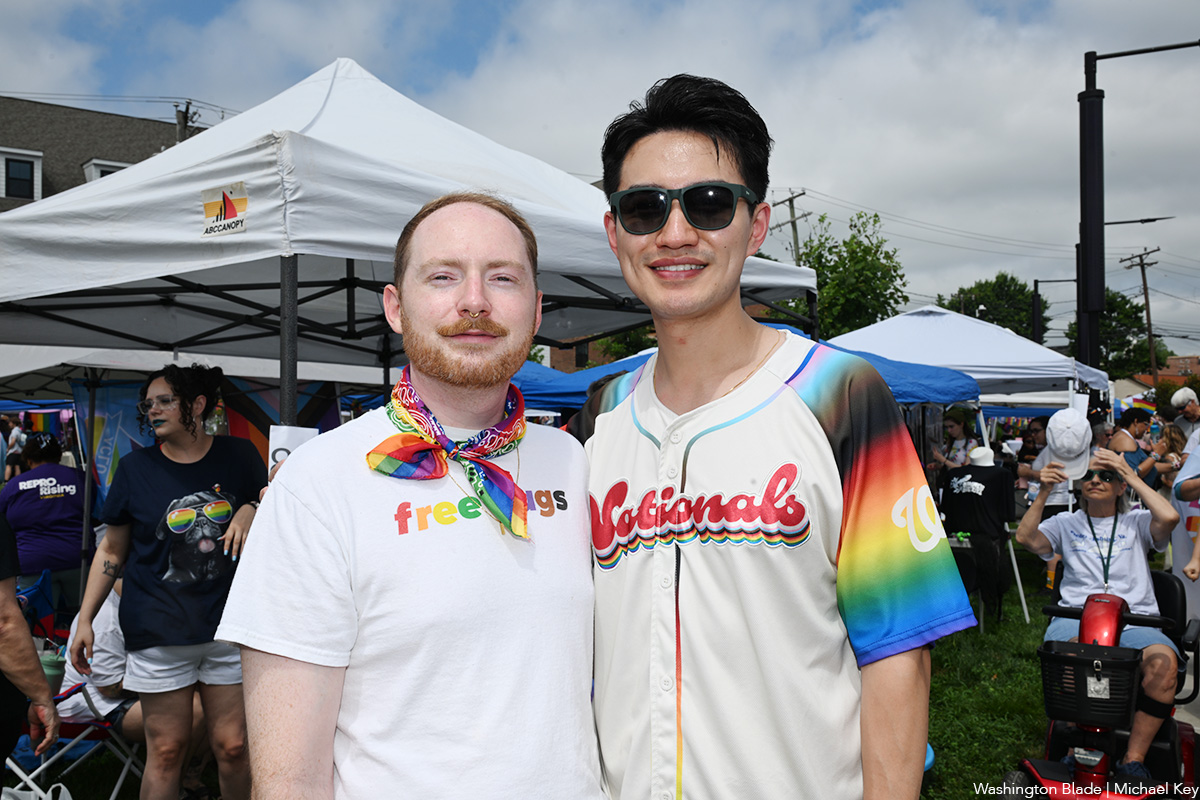

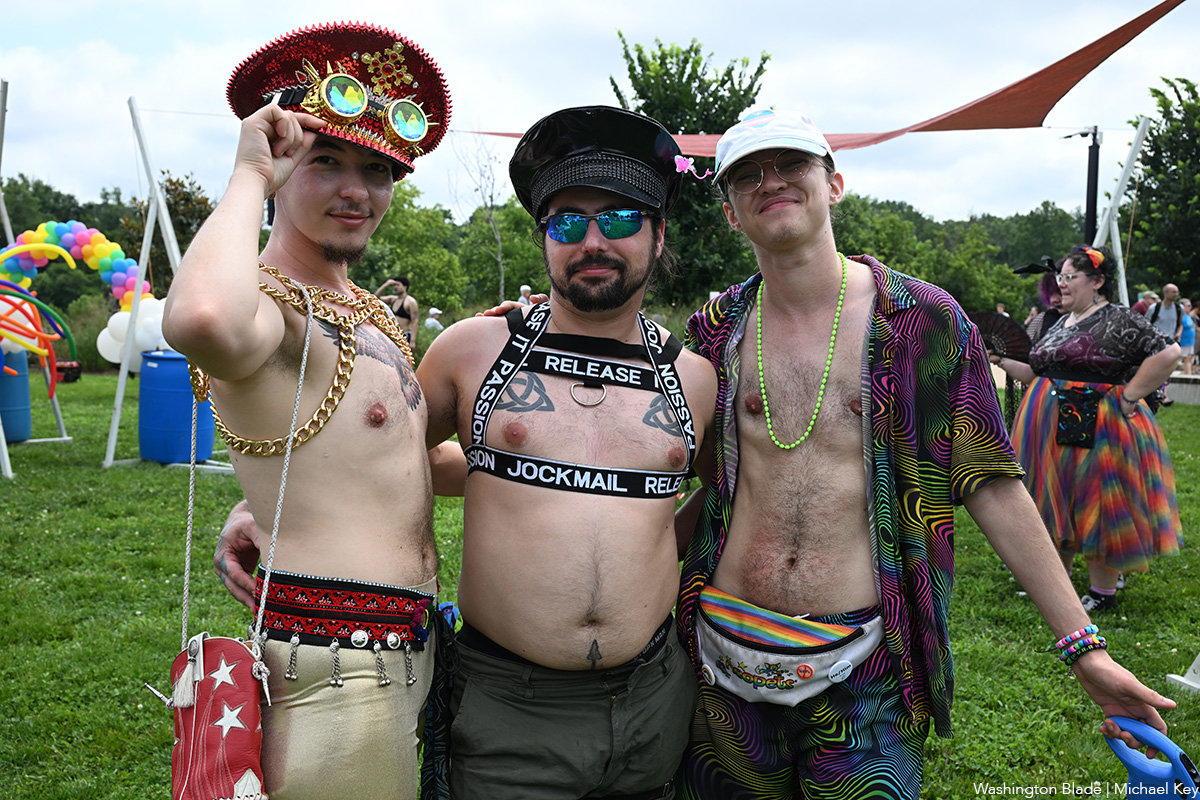
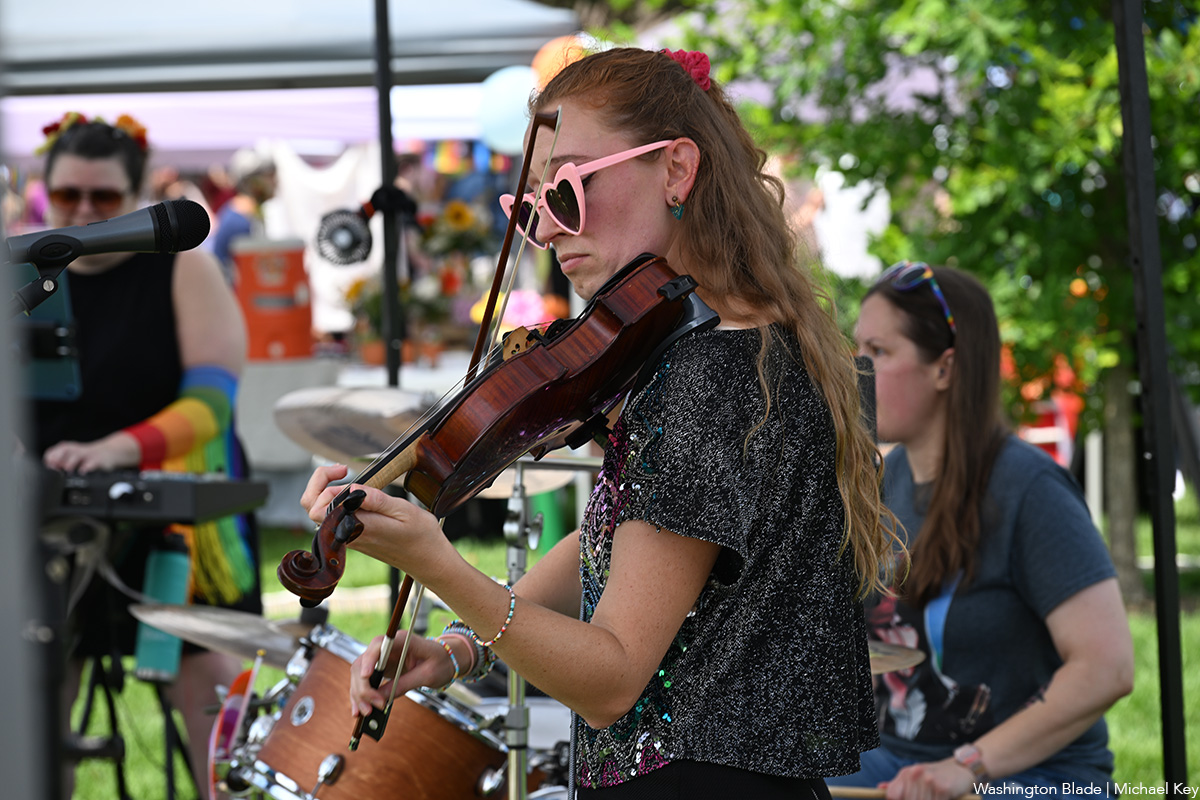
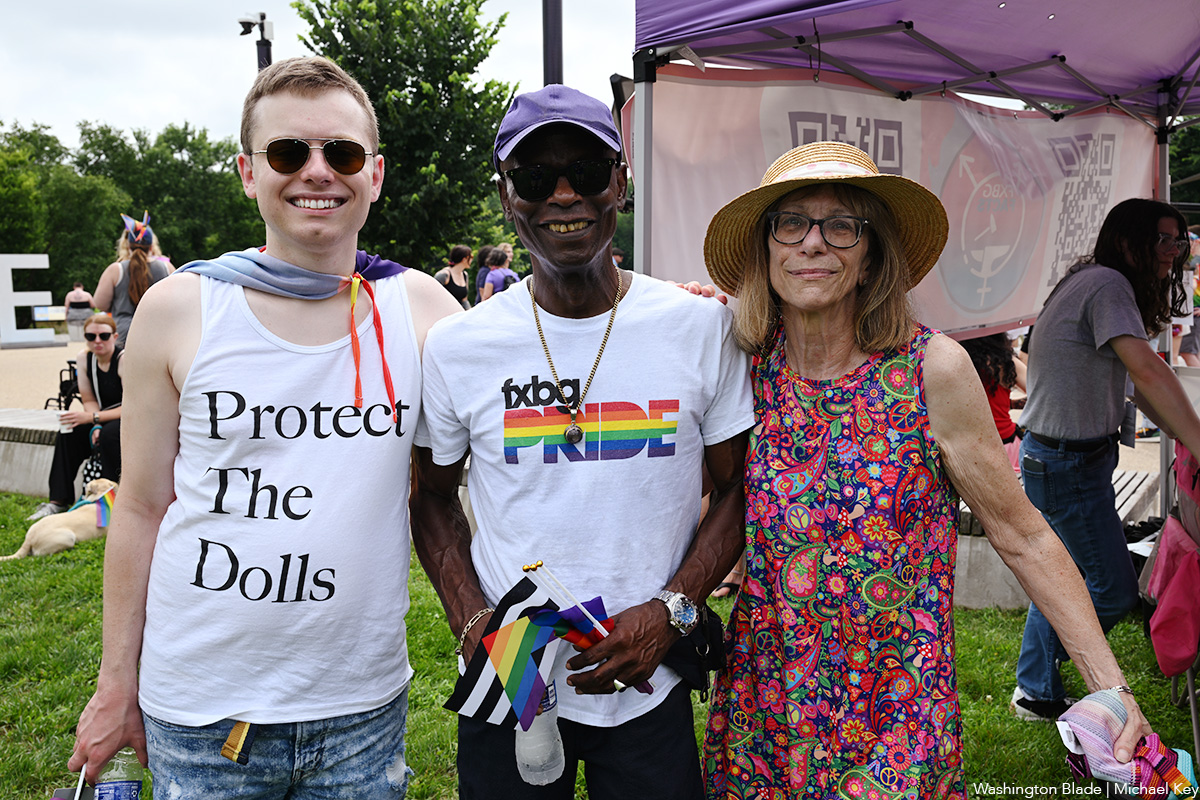
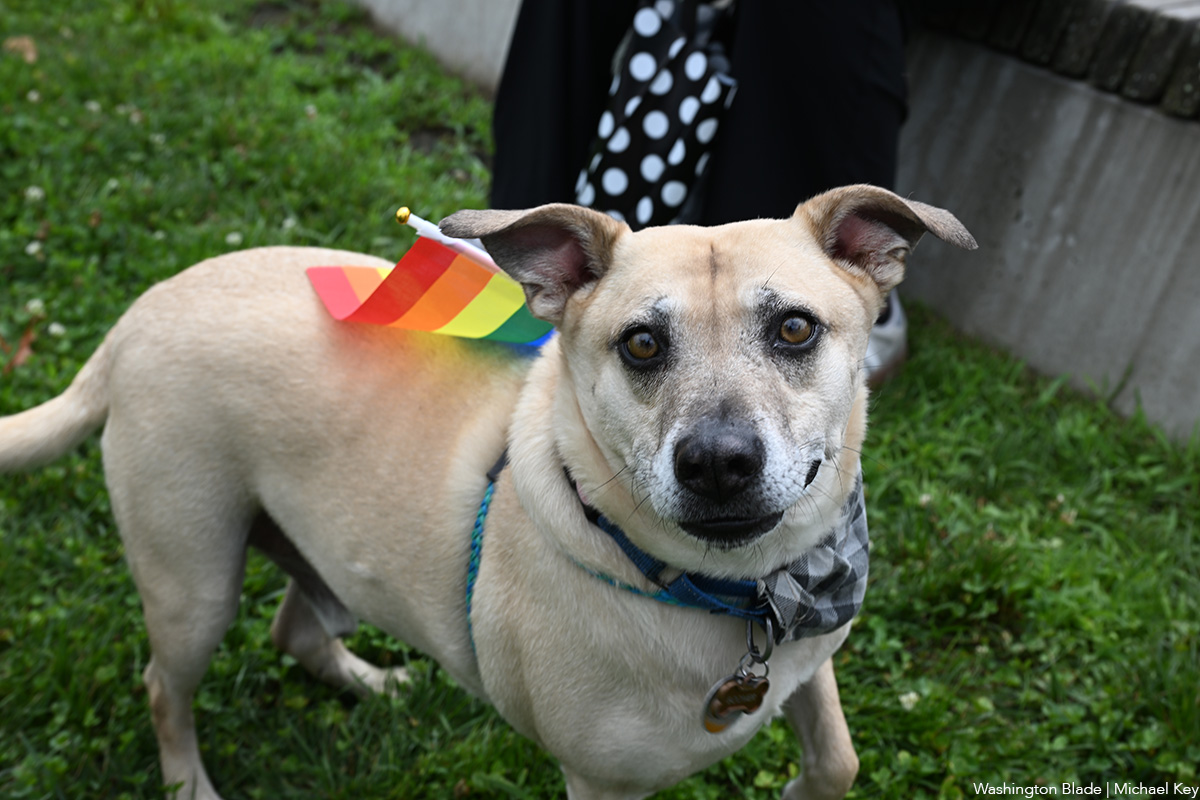
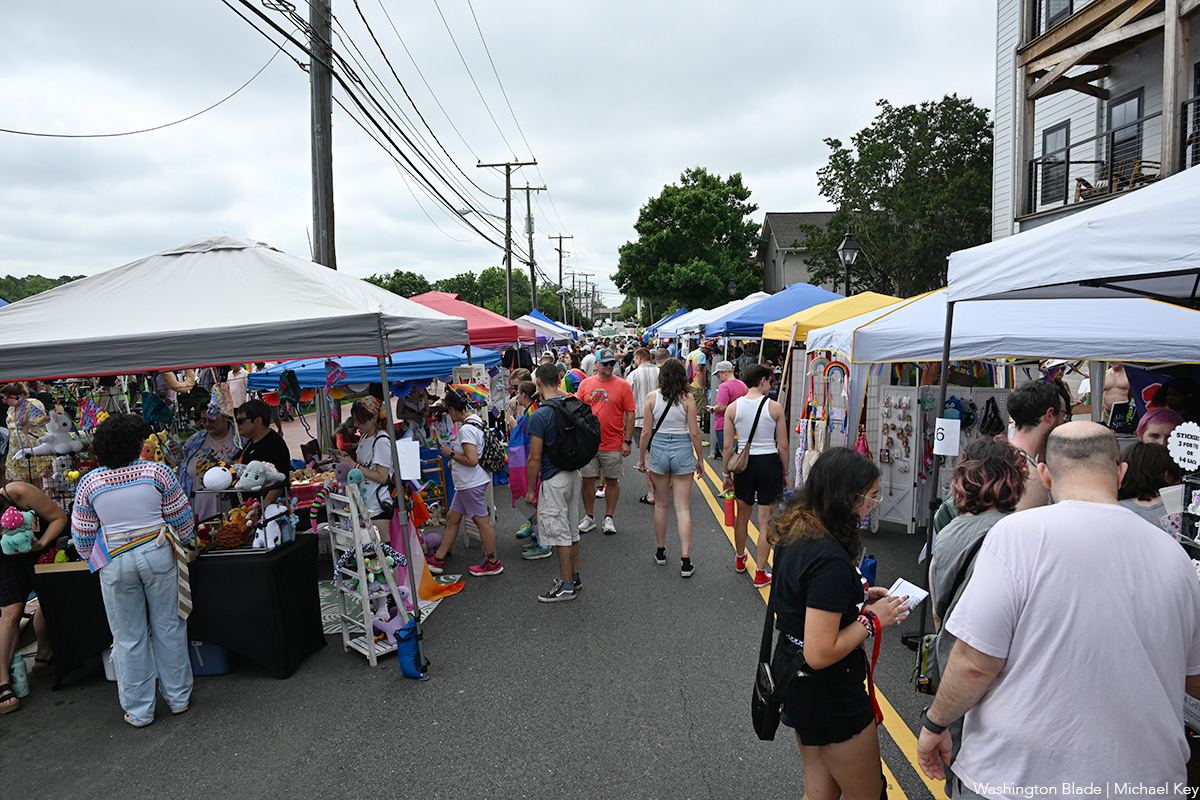
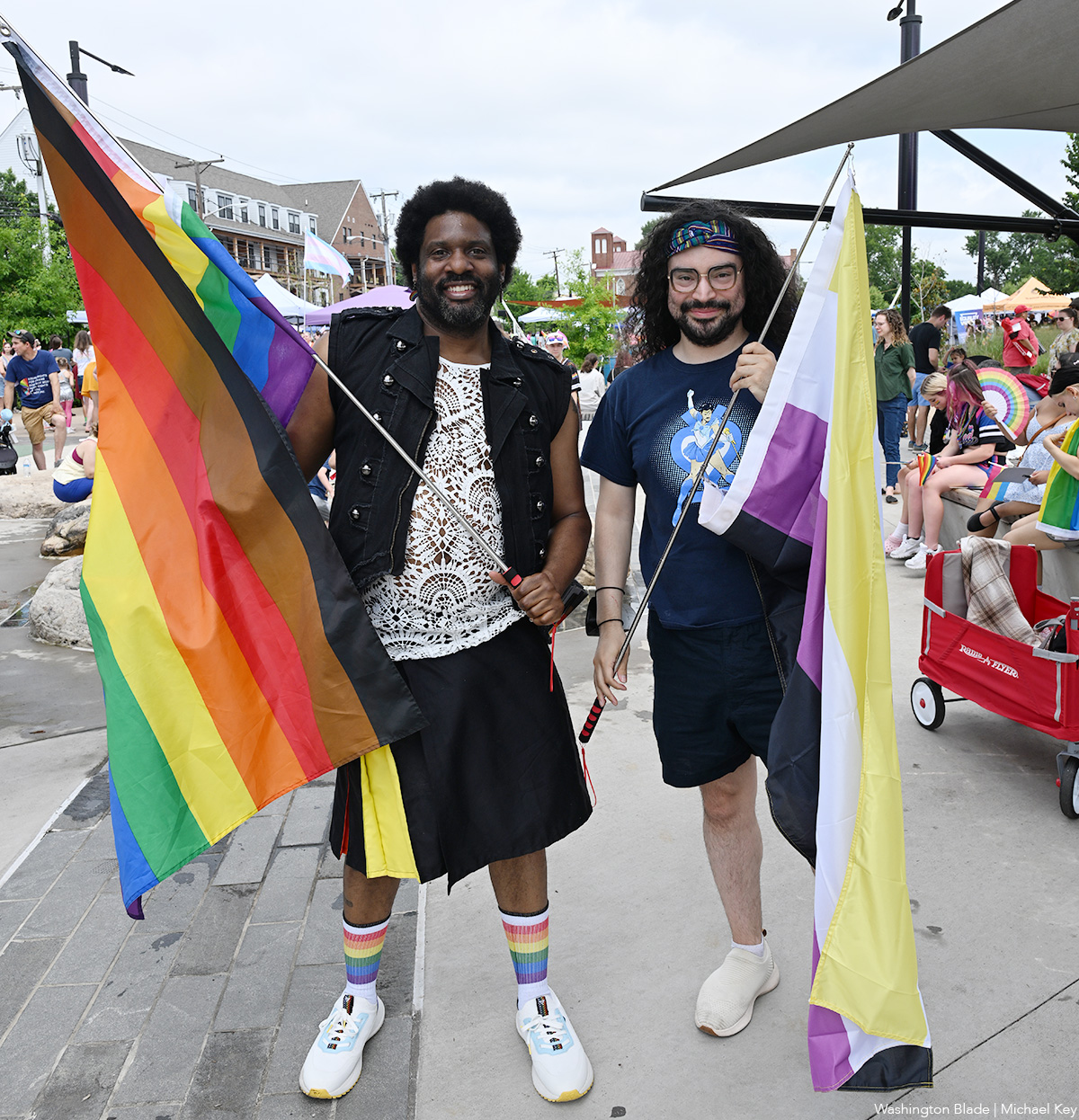
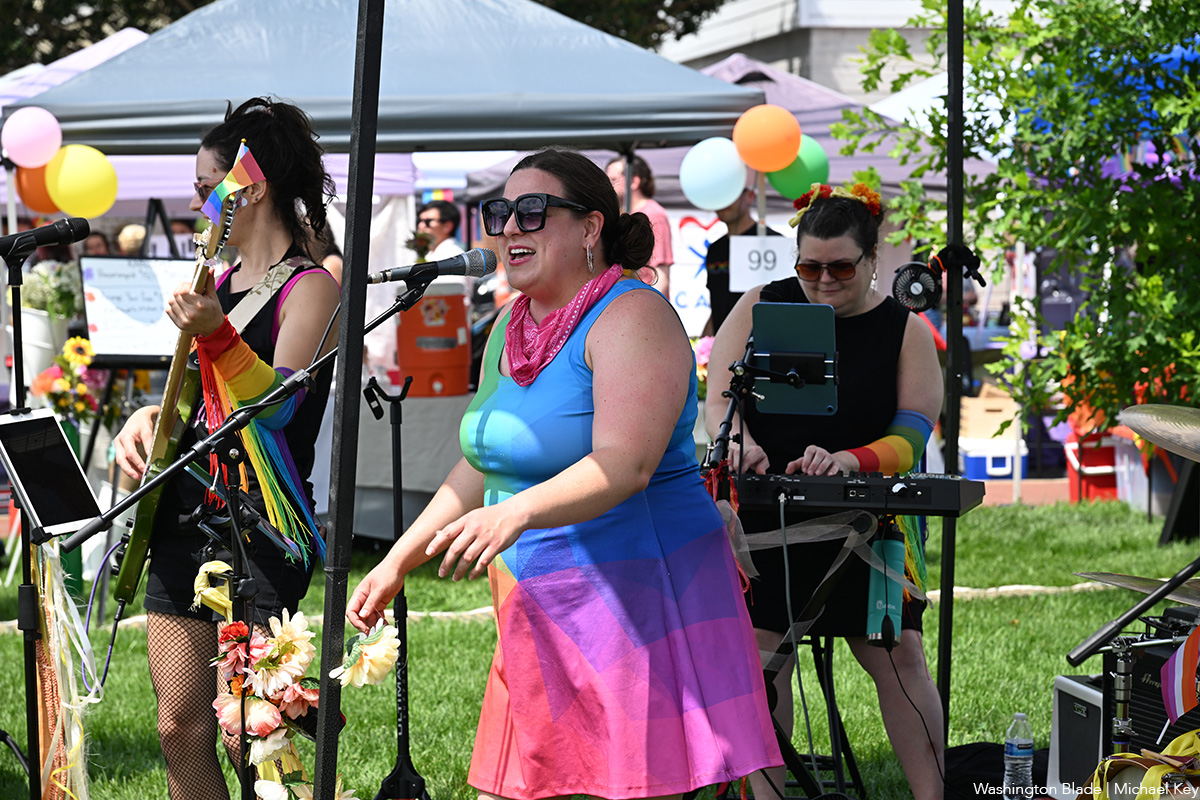
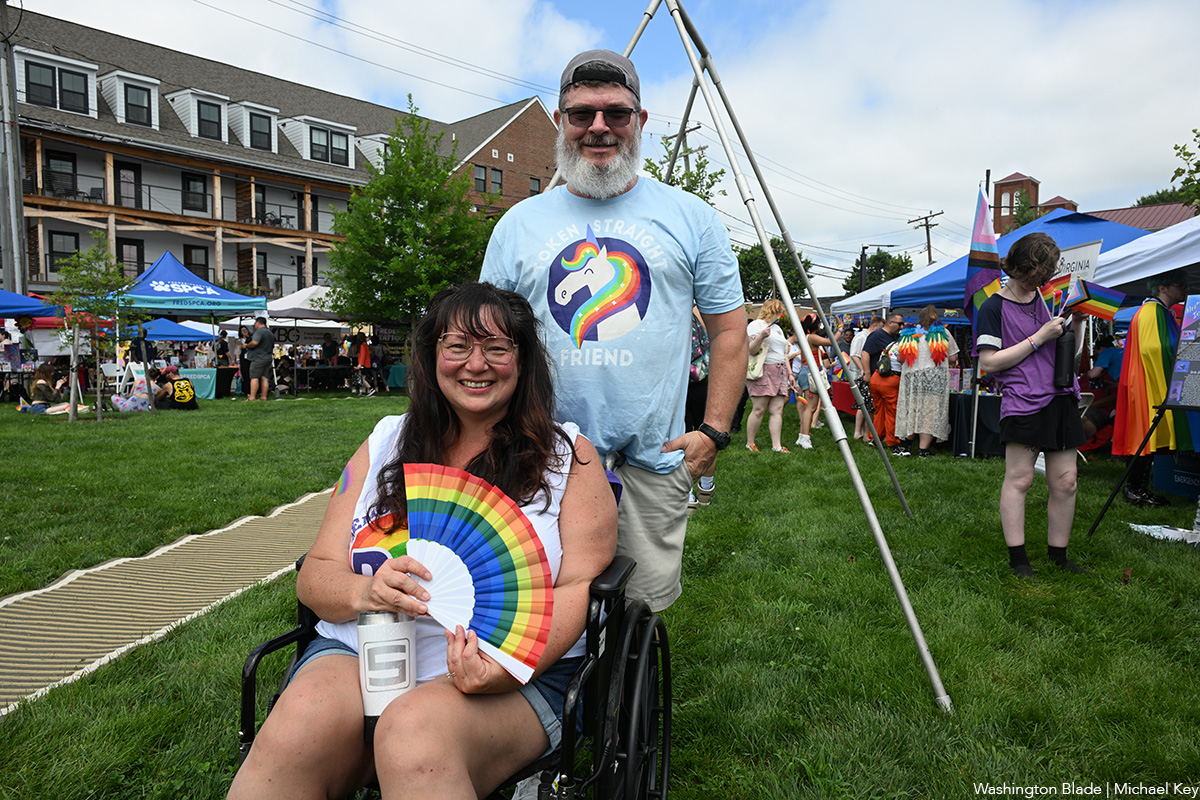
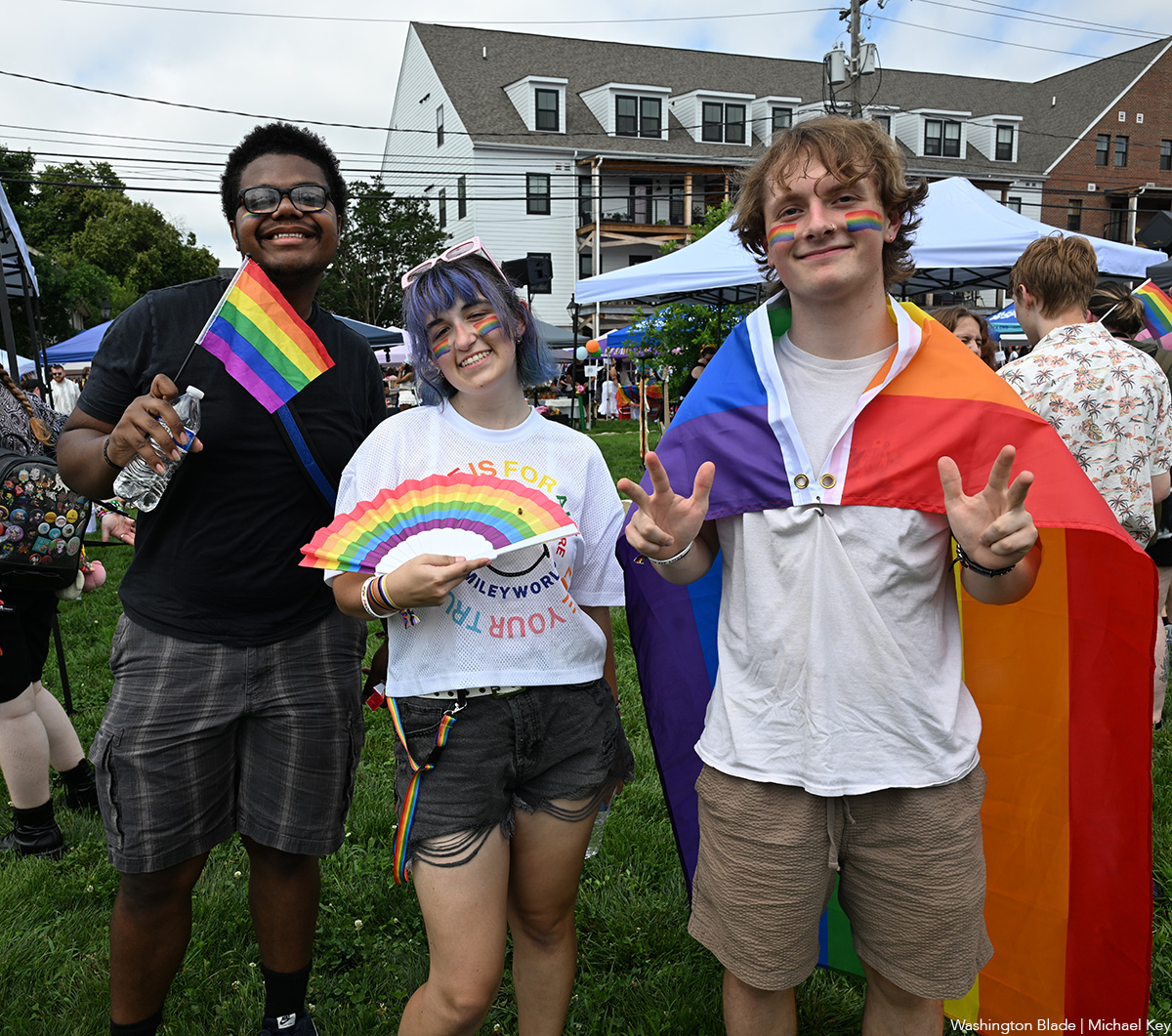
India
Anaya Bangar challenges ban on trans women in female cricket teams
Former Indian cricketer Sanjay Bangar’s daughter has received support
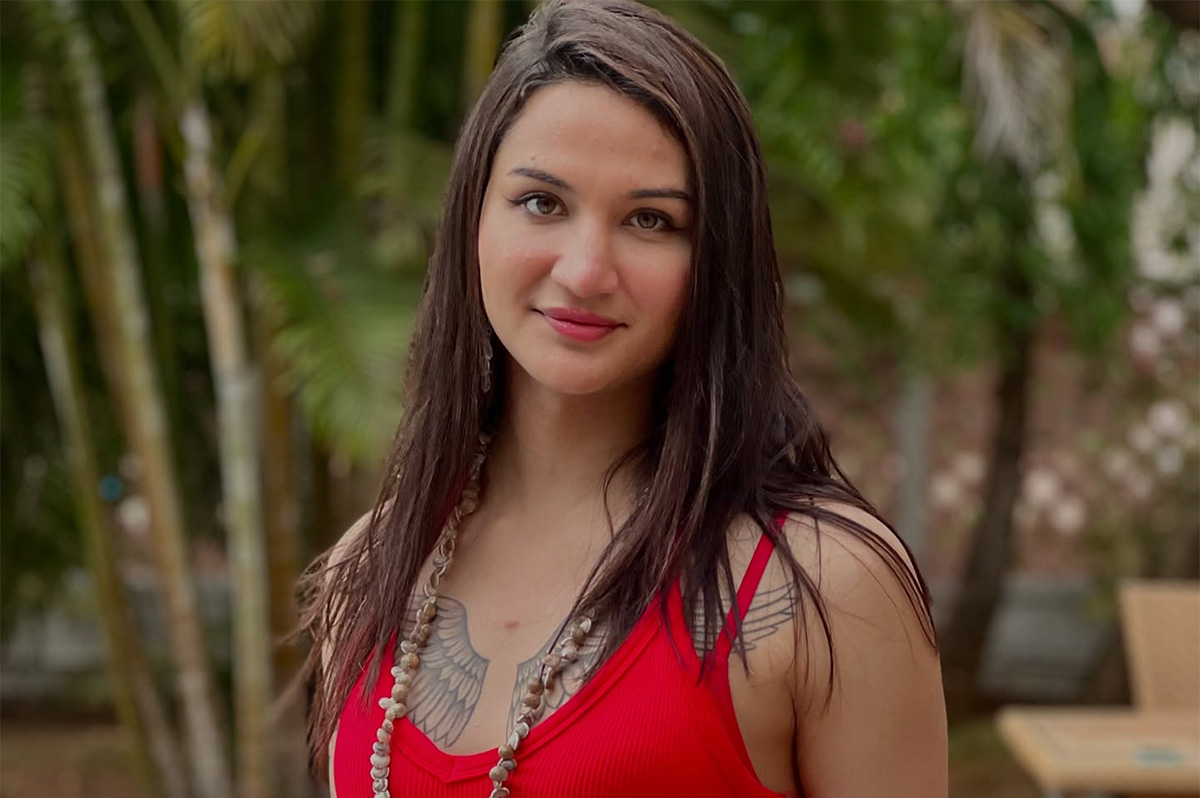
Anaya Bangar, the daughter of former Indian cricketer Sanjay Bangar, has partnered with the Manchester Metropolitan University Institute of Sport in the U.K. to assess her physiological profile following her gender-affirming surgery and undergoing hormone replacement therapy.
From January to March 2025, the 23-year-old underwent an eight-week research project that measured her glucose levels, oxygen uptake, muscle mass, strength, and endurance after extensive training.
The results, shared via Instagram, revealed her metrics align with those of cisgender female athletes, positioning her as eligible for women’s cricket under current scientific standards. Bangar’s findings challenge the International Cricket Council’s 2023 ban on transgender athletes in women’s cricket, prompting her to call for a science-based dialogue with the Board of Control for Cricket in India and the ICC to reform policies for transgender inclusion.
“I am talking with scientific evidence in my hand,” Bangar said in an interview posted to her Instagram page. “So, I hope, this makes an impact and I will be hoping to BCCI and ICC talking with me and discussing this further.”
On Nov. 21, 2023, the ICC enacted a controversial policy barring trans women from international women’s cricket. Finalized after a board meeting in Ahmedabad, India, the regulation prohibits any trans player who has experienced male puberty from competing, irrespective of gender-affirming surgery or hormone therapy. Developed through a 9-month consultation led by the ICC’s Medical Advisory Committee, the rule aims to safeguard the “integrity, safety, and fairness” of women’s cricket but has drawn criticism for excluding athletes like Canada’s Danielle McGahey, the first trans woman to play internationally. The policy, which allows domestic boards to set their own rules, is slated for review by November 2025.
Bangar shared a document on social media verifying her participation in a physiological study at the Manchester Metropolitan University Institute of Sport, conducted from Jan. 20 to March 3, 2025, focused on cricket performance. The report confirmed that her vital metrics — including haemoglobin, blood glucose, peak power, and mean power — aligned with those of cisgender female athletes. Initially, her fasting blood glucose measured 6.1 mmol/L, slightly above the typical non-diabetic range of 4.0–5.9 mmol/L, but subsequent tests showed it normalized, reinforcing the study’s findings that her physical profile meets female athletic standards.
“I am submitting this to the BCCI and ICC, with full transparency and hope,” said Bangar. “My only intention is to start a conversation based on facts not fear. To build space, not divide it.”
In a letter to the BCCI and the ICC, Bangar emphasized her test results from the Manchester Metropolitan University study. She explained that the research aimed to assess how hormone therapy had influenced her strength, stamina, haemoglobin, glucose levels, and overall performance, benchmarked directly against cisgender female athletic standards.
Bangar’s letter to the BCCI and the ICC clarified the Manchester study was not intended as a political statement but as a catalyst for a science-driven dialogue on fairness and inclusion in cricket. She emphasized the importance of prioritizing empirical data over assumptions to shape equitable policies for trans athletes in the sport.
Bangar urged the BCCI, the world’s most influential cricket authority, to initiate a formal dialogue on trans women’s inclusion in women’s cricket, rooted in medical science, performance metrics, and ethical fairness. She called for the exploration of eligibility pathways based on sport-specific criteria, such as haemoglobin thresholds, testosterone suppression timelines, and standardized performance testing. Additionally, she advocated for collaboration with experts, athletes, and legal advisors to develop policies that balance inclusivity with competitive integrity.
“I am releasing my report and story publicly not for sympathy, but for truth. Because inclusion does not mean ignoring fairness, it means measuring it, transparently and responsibly,” said Bangar in a letter to the BCCI. “I would deeply appreciate the opportunity to meet with you or a representative of the BCCI or ICC to present my findings, discuss possible policy pathways, and work towards a future where every athlete is evaluated based on real data, not outdated perceptions.”
Before her transition, Bangar competed for Islam Gymkhana in Mumbai and Hinckley Cricket Club in the U.K., showcasing her talent in domestic cricket circuits. Her father, Sanjay Bangar, was a dependable all-rounder for the Indian national cricket team from 2001 to 2004, playing 12 test matches and 15 One Day Internationals. He later served as a batting coach for the Indian team from 2014 to 2019, contributing to its strategic development.
Cricket in India is a cultural phenomenon, commanding a fanbase of more than 1 billion, with more than 80 percent of global cricket viewership originating from the country.
The International Cricket Council, the sport’s governing body, oversees 12 full member nations and more than 90 associate members, with the U.S. recently gaining associate member status in 2019 and co-hosting the 2024 ICC Men’s T20 World Cup. The BCCI generated approximately $2.25 billion in revenue in the 2023–24 financial year, primarily from the Indian Premier League, bilateral series, and ICC revenue sharing. The ICC earns over $3 billion from media rights in India alone for the 2024–27 cycle, contributing nearly 90 percent of its global media rights revenue, with the BCCI receiving 38.5 percent of the ICC’s annual earnings, approximately $231 million per year.
Women’s cricket in India enjoys a growing fanbase, with over 300 million viewers for the Women’s Premier League in 2024, making it a significant driver of the sport’s global popularity. The International Cricket Council oversees women’s cricket in 12 full member nations and over 90 associate members, with the U.S. fielding a women’s team since gaining associate status in 2019 and competing in ICC events like the 2024 Women’s T20 World Cup qualifiers. The BCCI invests heavily in women’s cricket, allocating approximately $60 million annually to the WPL and domestic programs in 2024–25, while contributing to the ICC’s $20 million budget for women’s cricket development globally. India’s media market for women’s cricket, including WPL broadcasting rights, generated $120 million in 2024, accounting for over 50 percent of the ICC’s women’s cricket media revenue.
“As a woman, I feel when someone says that they are women, then they are, be trans or cis. A trans woman is definitely the same as a cis woman emotionally and in vitals, and specially, when someone is on hormone replacement therapy. Stopping Anaya Bangar from playing is discrimination and violation of her rights. It is really sad and painful that every transwoman need to fight and prove their identity everywhere,” said Indrani Chakraborty, an LGBTQ rights activist and a mother of a trans woman. “If ICC and BCCI is stopping her from playing for being transgender, then I will say this to be their lack of awareness and of course the social mindsets which deny acceptance.”
Chakraborty told the Blade that Bangar is an asset, no matter what. She said that the women’s cricket team will only benefit by participation, but the discriminating policies are the hindrance.
“Actually the transgender community face such discrimination in every sphere. In spite of being potent, they face rejection. This is highly inhuman. These attitudes is regressive and will never let to prosper. Are we really in 2025?,” said Chakraborty. “We, our mindset and the society are the issues. We, as a whole, need to get aware and have to come together for getting justice for Anaya. If today, we remain silent, the entire community will be oppressed. Proper knowledge of gender issues need to be understood.”
The BCCI and the International Cricket Council have not responded to the Blade’s repeated requests for comment.
Theater
‘Andy Warhol in Iran’ a charming look at intersection of art, politics
Mosaic production plumbs kidnapping plot of iconic artist for humor
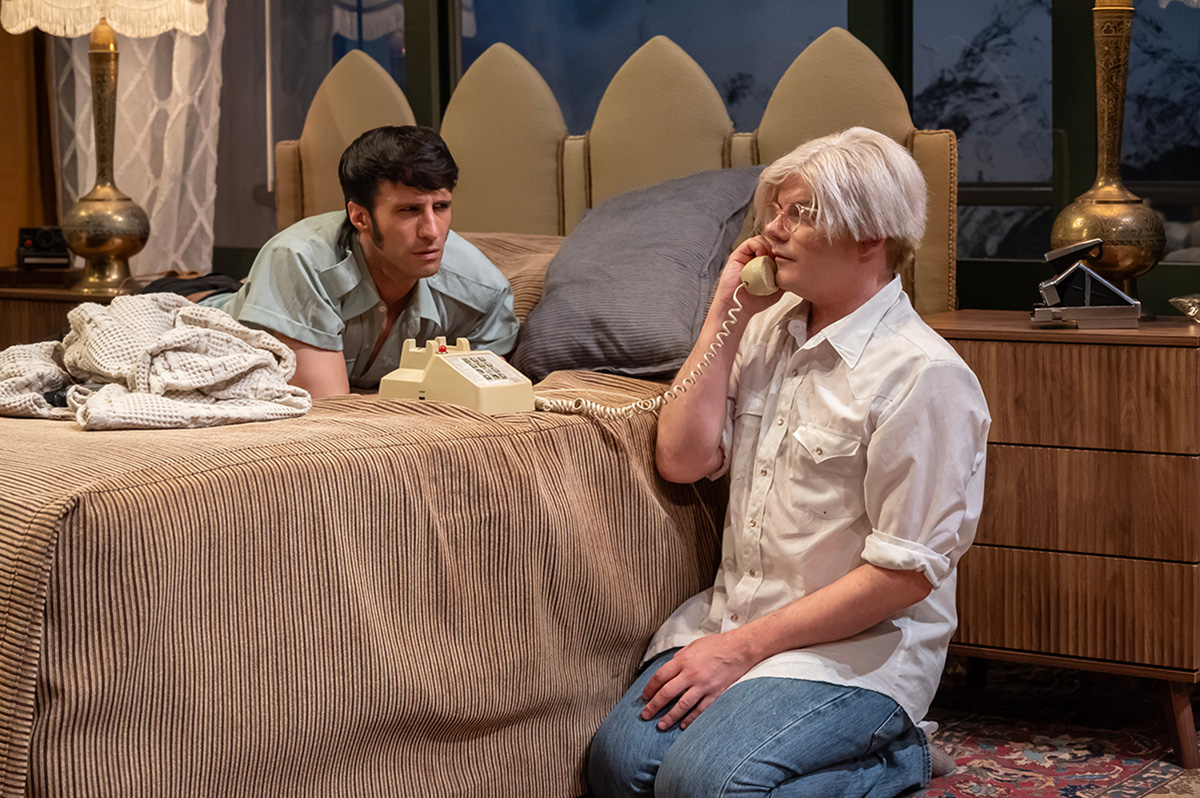
‘Andy Warhol in Iran’
Through July 6
Mosaic Theater Company at Atlas Performing Arts Center
1333 H St., N.E., WDC
$70
Mosaictheater.org
Behind the blasé veneer, Andy Warhol was more curious than people knew. Particularly when it came to money. He kept a close eye on how the ultra-rich lived, what fellow artists were being paid and who was paying them, and, of course, all the new and more saleable ways of making and selling art.
In playwright Brent Askari’s “Andy Warhol in Iran,” now playing at Mosaic Theater Company, Warhol (Alex Mills) is brought outside of his usual area of interest when he lands face to face with a young revolutionary. While Warhol could be artistically revolutionary, he didn’t connect with the idea of forgoing the pursuit of money and fame for the infinitely more difficult task of achieving social justice.
The 90-minute play is not fully factual, but rather inspired by Warhol’s real life 1976 trip to Tehran to make portraits of the royal Pahlavi family in the waning days of their reign, with a focus on Farah Diba, the Shah’s elegant wife and Iran’s last empress.
The action unfolds in a Tehran hotel suite boasting a glorious view of the snowcapped Alborz Mountains not far from Iran’s vibrant and bustling capital. It’s here, disguised as room service, that Farhad (played by Nathan Mohebbi) gains entrance to Warhol’s rooms, seeking to kidnap the pop art star to garner attention for the university students’ movement.
Warhol meets the armed intruder with a sort of wide-eyed wonderment, flummoxed why he has been selected for abduction. Warhol can’t understand why a young man like Farhad wouldn’t prefer to be paid a big ransom on the spot, or be cast as a star in one of the Warhol Factory flicks.
When Farhad replies it’s because Warhol is the most decadent artist in the world, Warhol mistakenly takes it for the ultimate compliment. After all, his biggest successes had been connected to celebrity and consumerism (think Campbell’s Soup Cans. 1962).
For Warhol, decadence is aspirational. He made portraits of financiers, movie stars, and jet setters. In fact, he’d been obsessed with the lives of the rich and famous since he was a small kid in Pittsburgh thumbing through Photoplay Magazine while bed bound with Saint Vitus Dance.
Accompanying Warhol to Tehran (unseen) are his business manager Fred Hughes, and Bob Colacello, editor of Interview magazine. Together, they make a merry trio of gay social climbers. These kinds of trips were a boon to the artist. Not only did they solidify a new strata of high society contacts, but were also superbly lucrative, thickly padding the painter’s pockets.
While in Iran, Warhol wanted only to view Farah’s vast world-class collection of jewels, sample the caviar on tap, and get his Polaroids. Then he’d fly first class back to New York and transfer the images to silk screen and sell the portraits to the Persian royals at a hefty price. He didn’t foresee any obstacles along the way.
Serge Seiden’s direction is spot on. He’s rendered a wonderfully even two-hander with a pair of terrifically cast actors. And Seiden plumbs the piece for humor mostly drawn from the absurdity of the situation without missing any of the serious bits.
As Warhol, out actor Mills is instantly recognizable as the eccentric artist. He’s wearing the button-down shirt, jeans, blazer, glasses, and, of course the famed shock of white hair wig (here a little more Karen than Andy). His portrayal is better than an imitation. He gives a bit of the fey and confused, but has also infuses him with a certain dynamism.
The energy works well with the intensity of Mohebbi’s would-be kidnapper Farhad. And while it isn’t a romance, it’s not impossible to think that Warhol might fall for a handsome male captor.
The connection between art and politics is almost always interesting; and though not a super deep dive into the era or the life of an artist, “Andy Warhol in Iran” is a compelling, charming, and sometimes funny glimpse into that intersection.
-
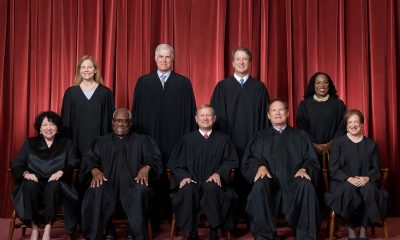
 U.S. Supreme Court3 days ago
U.S. Supreme Court3 days agoSupreme Court upholds ACA rule that makes PrEP, other preventative care free
-

 U.S. Supreme Court4 days ago
U.S. Supreme Court4 days agoSupreme Court rules parents must have option to opt children out of LGBTQ-specific lessons
-
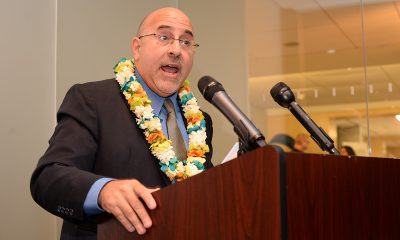
 National5 days ago
National5 days agoEvan Wolfson on the 10-year legacy of marriage equality
-
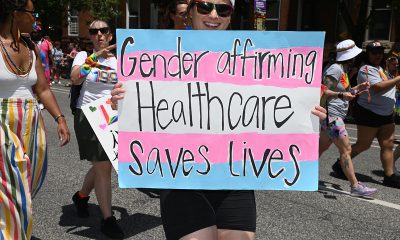
 Congress4 days ago
Congress4 days agoSenate parliamentarian orders removal of gender-affirming care ban from GOP reconciliation bill
